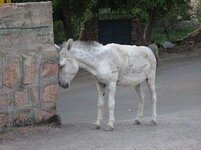- Messages
- 599
- Reactions
- 176
Guys,
I'm dipping my toe into handloading and precision shooting for the first time and could use some advice for my first set of component purchases.
This is for an AR-15 with this <broken link removed>.
Bullets
Given the 1:8 twist rate, would I be better served by going 68/69 grain or 75/77 grain?
Powders
I'm totally in the dark here. Totally.
Supposedly I should go with a slower burning powder for the "heavier" bullets....?
I've seen plenty of powders listed, but the frequent ones are:
Appreciate your thoughts!
I'm dipping my toe into handloading and precision shooting for the first time and could use some advice for my first set of component purchases.
This is for an AR-15 with this <broken link removed>.
Bullets
Given the 1:8 twist rate, would I be better served by going 68/69 grain or 75/77 grain?
- Hornady Match 68gr - BC: .355
- Nosler Custom Competition 69gr - BC: .305
- Sierra Matchking69gr - .305
- Hornady Match75gr - BC: .395
- Nosler Custom Competition 77gr - BC: .340
- Sierra Matchking77gr - BC: .362
Powders
I'm totally in the dark here. Totally.
Supposedly I should go with a slower burning powder for the "heavier" bullets....?
I've seen plenty of powders listed, but the frequent ones are:
- H-4895
- Reloader 15 (Reloader runs really dirty?)
- Varget (plenty of people love it, plenty hate it?)
- IMR 4064 (grains are too big to easily load into the .223 case?)
Appreciate your thoughts!












